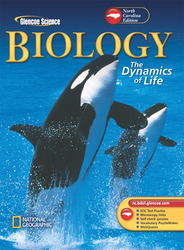1 A) Australia B) America C) Africa D) Antarctica 2 <a onClick="window.open('/olcweb/cgi/pluginpop.cgi?it=gif::::/sites/dl/free/0078675642/181859/Ch32_0_a.gif','popWin', 'width=NaN,height=NaN,resizable,scrollbars');" href="#"><img valign="absmiddle" height="16" width="16" border="0" src="/olcweb/styles/shared/linkicons/image.gif"> (5.0K)</a> A) D B) C C) A D) B 3 A) platypus B) chimpanzee C) Tasmanian devil D) kangaroo 4 A) wolf B) horse C) beaver D) dolphin 5 <a onClick="window.open('/olcweb/cgi/pluginpop.cgi?it=gif::::/sites/dl/free/0078675642/181859/Ch32_0_b.gif','popWin', 'width=NaN,height=NaN,resizable,scrollbars');" href="#"><img valign="absmiddle" height="16" width="16" border="0" src="/olcweb/styles/shared/linkicons/image.gif"> (12.0K)</a> A) cetaceans B) primates C) marsupials D) monotremes 6 A) protects the skin B) provides mucus C) can be shed D) conserves body heat 7 <a onClick="window.open('/olcweb/cgi/pluginpop.cgi?it=gif::::/sites/dl/free/0078675642/181859/Ch32_0_a.gif','popWin', 'width=NaN,height=NaN,resizable,scrollbars');" href="#"><img valign="absmiddle" height="16" width="16" border="0" src="/olcweb/styles/shared/linkicons/image.gif"> (5.0K)</a> A) B B) A C) D D) C 8 A) marsupials B) therapsids C) monotremes D) primates 9 A) increase the surface area B) form ridges for storing learned behavior C) transfer heat from the body to the environment D) secrete necessary fluids 10 <a onClick="window.open('/olcweb/cgi/pluginpop.cgi?it=gif::::/sites/dl/free/0078675642/181859/Ch32_0_a.gif','popWin', 'width=NaN,height=NaN,resizable,scrollbars');" href="#"><img valign="absmiddle" height="16" width="16" border="0" src="/olcweb/styles/shared/linkicons/image.gif"> (5.0K)</a> A) meat B) insects C) carrion D) plants







